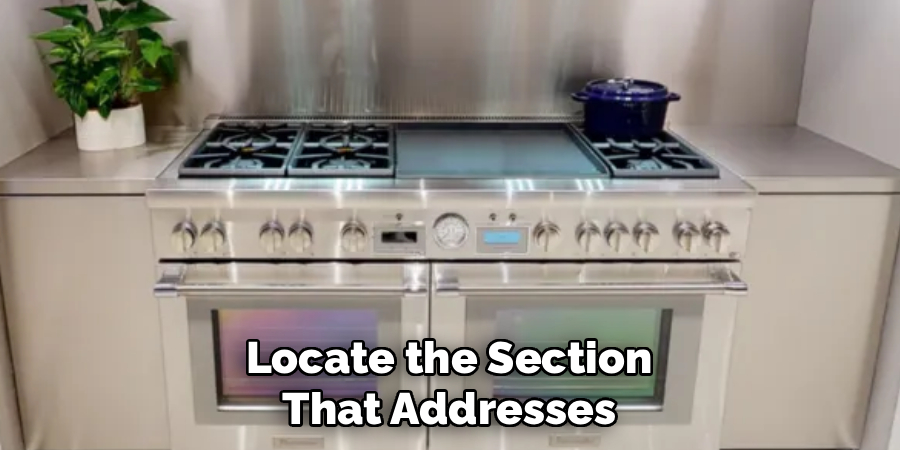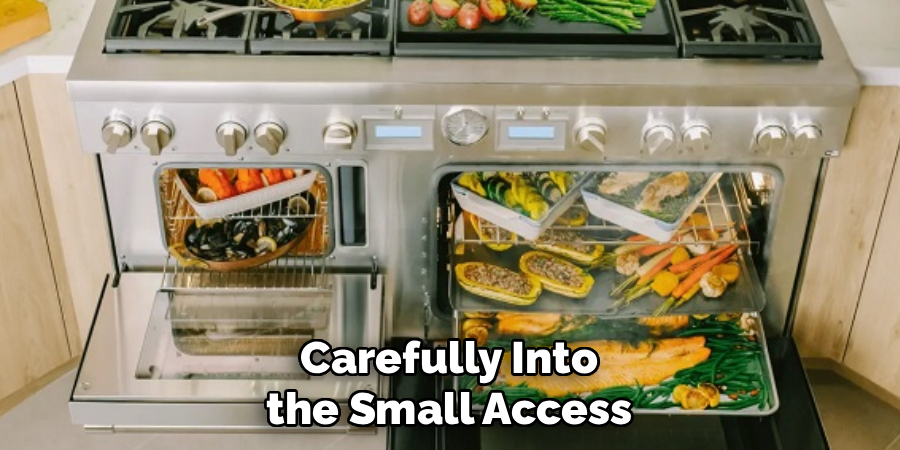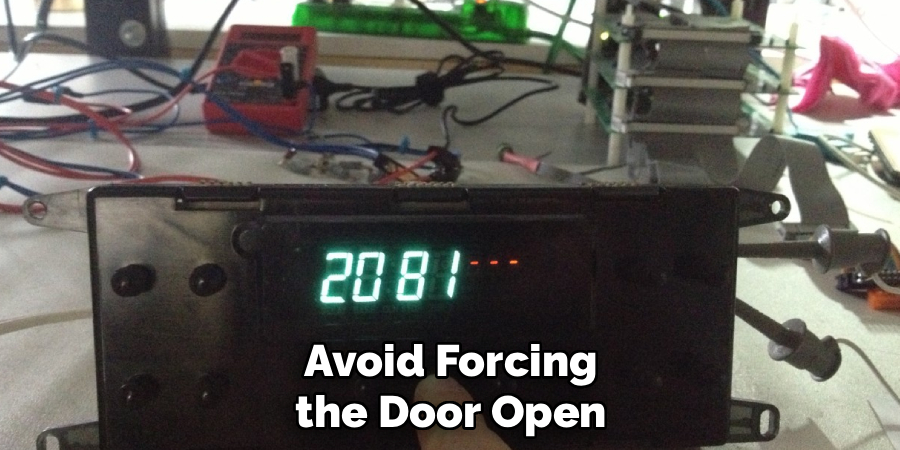When the lock feature on your Thermador oven is activated, it can prevent you from using the appliance effectively. This feature is designed to ensure safety, but it can sometimes be accidentally triggered, leading to confusion. Unlocking your Thermador oven is a straightforward process if you follow the correct steps.

This guide on how to unlock Thermador oven will walk you through everything you need to know to safely and efficiently unlock your oven.
Understand Why the Oven is Locked
Before attempting to unlock your Thermador oven, it’s important to understand why it might be locked. The locking mechanism is typically engaged for a few key reasons. Firstly, the oven may lock automatically during the self-cleaning cycle to prevent the door from being opened due to the high temperatures inside.
Additionally, the lock feature can be manually activated as a safety precaution, especially in households with children. Finally, the lock may also engage if there is an error or malfunction in the oven’s system. Identifying the reason for the locked state can help you determine the best course of action to resolve the issue.
Needed Materials
To unlock a self-cleaning oven, you will need the following materials:
Oven Manual
This contains specific instructions on how to unlock the oven based on its make and model. It is essential to consult the manual first before attempting any unlocking methods.
Oven Gloves
The high temperatures in a self-cleaning oven can cause burns, so it is crucial to wear protective gloves when handling the appliance.
A Thin Object (Such as a Toothpick or Paper Clip)
In some cases, a small object may be needed to manually release the lock mechanism.
5 Simple Guides on How to Unlock Thermador Oven
Step 1: Check the Manual
The first and most important step in unlocking your Thermador oven is to consult the user manual. The manual typically provides specific instructions tailored to your oven’s model and features.

Locate the section that addresses unlocking mechanisms or troubleshooting the lock. If you no longer have a physical copy of the manual, you can often find a digital version on the Thermador website by entering your oven’s model number. Reading the manual ensures you are following the correct procedure and prevents accidental damage to the appliance.
Step 2: Oven Gloves
Before proceeding with any attempts to unlock the oven, ensure that you are wearing oven gloves or heat-resistant mitts for safety. If the oven is still hot, touching its surfaces directly could result in burns or injuries.
Oven gloves will provide the necessary protection, allowing you to handle the appliance safely as you follow troubleshooting steps. Prioritizing safety is crucial when dealing with kitchen appliances.
Step 3: Resetting the Oven
If the oven remains locked, the next step is to reset it. To do this, start by turning off the oven and unplugging it from the power source. Leave it disconnected for approximately 5 to 10 minutes, allowing the oven to reset its internal systems.
If you cannot access the plug directly, you can turn off the circuit breaker supplying power to the oven. After waiting, restore power by plugging the oven back in or switching the circuit breaker back on. This reset process often resolves minor electronic glitches that could be causing the lock mechanism to malfunction. Make sure to check if the problem is resolved before moving on to further troubleshooting steps.
Step 4: Using a Thin Object
If the oven door remains locked despite attempting a reset, you can try using a thin, non-metallic object to gently manipulate the lock mechanism. Ensure the oven is powered off and cool before attempting this step to avoid injury or damage.

Insert the object carefully into the small access slot near the door latch to release the lock manually. Be gentle to prevent bending or breaking any components. If this method works, test the door several times to confirm it opens and closes properly without resistance. If unsuccessful, consider consulting the oven’s user manual or contacting professional support for assistance.
Step 5: Power Cycling
If all other methods fail, try power cycling your oven. Turn off the power at the circuit breaker for a few minutes and then turn it back on. This may reset any internal mechanisms that are causing issues with unlocking.
Following these steps on how to unlock Thermador oven should help you resolve any issues you may have. Remember to always handle your oven with caution and consult professional support if needed.
Additional Tips

- Avoid using excessive force when trying to unlock your oven as this can damage the lock mechanism.
- Make sure to follow any specific instructions provided by Thermador in your oven’s user manual.
- If these steps do not work, try resetting your oven by turning off the power for a few minutes and then trying again.
- Regularly clean and maintain your oven to prevent any build-up or malfunctions that may lead to difficulty in unlocking.
- Seek professional assistance if you are unsure about any steps or encounter persistent issues with unlocking your Thermador oven.
What to Do if the Oven Is Still Locked?
If your Thermador oven remains locked despite following the initial troubleshooting steps, consider the following actions:
Check for Error Codes
Look at the control panel for any error codes that may indicate a specific issue. Refer to your user manual to interpret the code and take the appropriate steps.
Inspect the Door Lock Mechanism
A malfunctioning door lock mechanism could be the cause. Carefully check if there is any visible damage or obstruction preventing the door from unlocking.
Verify the Self-Cleaning Cycle Status
If the oven lock engaged during or after a self-cleaning cycle, ensure the oven has cooled down completely. The lock will not disengage until the oven has safely returned to a normal temperature.
Restart the Oven
Disconnect the oven from the power supply by unplugging it or switching off the circuit breaker. Wait for at least 5 minutes before restoring power, then try unlocking the door once again.
Consult the Thermador Support Team
If all else fails, contact Thermador’s customer service or technical support for further assistance. They can provide specific guidance or arrange for a professional technician to inspect and repair your oven.
Always prioritize safety and avoid forcing the door open, as this may result in further damage to your appliance.

When to Call a Technician?
You should consider calling a professional technician if the issue persists after attempting the recommended troubleshooting steps. Common situations that warrant a technician’s expertise include persistent locking mechanisms that won’t disengage, repeated error codes, or any electrical issues such as the oven not powering on.
Additionally, if you notice unusual smells, sparks, or smoke emanating from the appliance, it’s critical to cease use immediately and seek expert assistance. A certified technician will have the skills and tools needed to safely diagnose and address these problems, ensuring your oven is functioning properly without risking further damage.
Preventive Tips
To keep your oven in optimal working condition and avoid potential issues, regular maintenance is crucial. Start by cleaning your oven frequently to prevent grease and food residue from building up, which could lead to unpleasant odors or even fire hazards. Avoid using harsh chemicals that may damage the interior; instead, opt for gentle cleaning solutions or the self-cleaning feature if your oven is equipped with one.
Check the oven’s seals to ensure they are intact and replace them if they show signs of wear, as damaged seals can impact efficiency and heating performance. Additionally, inspect the oven racks and heating elements periodically for any signs of damage. Lastly, refrain from overloading the oven, as this can strain its components and hinder proper airflow. These simple, preventive measures can help extend the lifespan of your oven and ensure its safe operation.
Frequently Asked Questions
Q: How Often Should I Clean My Oven?
A: It is recommended to give your oven a thorough cleaning at least once every three months. However, if you use your oven frequently or cook dishes that produce a lot of spills and splatters, it may be necessary to clean it more often.
Q: Can I Use Chemical Cleaners on My Oven?
A: Yes, you can use chemical cleaners specifically designed for ovens. Make sure to follow the instructions carefully and avoid getting any cleaner on the heating elements or other sensitive areas.
Q: How Do I Remove Stubborn Stains?
A: For stubborn stains, you can try using a paste made from baking soda and water. Apply the paste to the stain and let it sit for a few hours before wiping it off with a damp cloth. You can also try using an oven-safe cleaning spray and letting it sit overnight before wiping it off. If the stain still persists, you may need to use a scraper or non-abrasive cleaning pad to gently scrub it away. It’s important to be gentle with these tools so as not to damage the surface of your oven. Also, make sure to wear gloves and protect your skin when using chemical cleaners or abrasive tools.
Conclusion
Keeping your oven clean not only ensures it operates efficiently but also helps maintain a hygienic cooking environment. By using the right techniques and tools, you can tackle even the toughest stains without damaging your appliance.
Regular cleaning and proper care will extend the life of your oven and make your cooking experience more enjoyable. Remember to prioritize safety and consistently follow the recommended guidelines to achieve the best results. Thanks for reading this article on how to unlock Thermador oven.
Professional Focus
Angela Ervin, a former interior designer turned blogger, specializes in kitchen design and renovations. Through her website, she blends her passion for cooking with design expertise, sharing practical and creative ideas. Known for balancing functionality and beauty, Angela’s insightful content has made her a trusted voice in home design and lifestyle.
About the Author
Angela Ervin, an experienced interior designer and blogger, combines her passion for kitchen renovations with storytelling. Living in Petersburg with her family, she enjoys cooking and testing her projects firsthand. Known for her humor and relatable style, Angela shares creative, functional design insights through her content, making her a trusted voice in home design.
Education History
University: Virginia Commonwealth University
Degree: Bachelor of Fine Arts (BFA) in Interior Design
- Angela’s education at VCU focused on mastering core interior design principles, including spatial planning, color theory, materials selection, and sustainable design practices.
- She gained hands-on experience through studio projects and collaborative design exercises, which honed her ability to create functional and aesthetically pleasing environments.
- Her coursework also emphasized problem-solving and practical applications of design, preparing her for real-world projects like her self-directed kitchen renovations.
- The program’s strong foundation in both technical skills and creative expression shaped Angela’s ability to seamlessly integrate form and function in her work.
